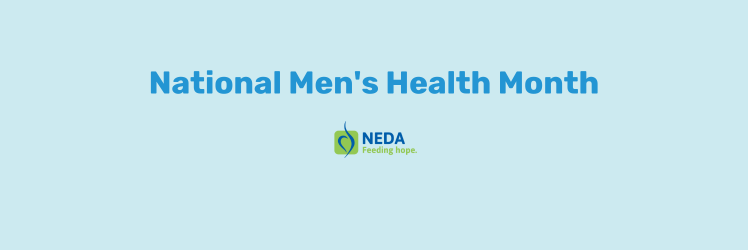A car collision one Friday morning required that I speak to a very astute hospital nurse. This was the first person to notice the anorexia I had been living with. It wouldn’t take long for my family members to also discover my behaviors and, after a little nudging and encouragement, my recovery journey began.
But what does recovery from an eating disorder look like?
I have always been told throughout my recovery journey from anorexia that it looks different for each person. I was already an adult in my late twenties when I first started showing symptoms and was deeply concerned how it might affect my professional career and relationships. Would recovery be a lasting thing or would I consistently need lifelong therapy?
It is now some years later and just in time for National Men’s Health Month, I can confidently say that yes – recovery can stick around and is entirely possible. Like many individuals with eating disorders, there were moments where I felt stronger and others marked by relapse.
What makes my present day recovery so strong? Three core aspects:
- Support
- Awareness
- Identity Building
Support
Surrounding myself with family and friends who care is an incredible asset. My family keeps me accountable and is willing to listen about my off days and triumphs equally. Pushing through recovery isolated away from my immediate family – due to geographic differences – made it that much harder to make progress. I continue to see a therapist on a regular schedule and that feels like the proper “normal” to me as a maintenance/preventative routine.
Awareness
The experiences of recovery bring with it the boon of awareness. What can be learned from previous struggles and victories? I find that maintaining recovery is much easier to carry onward when I’m able to notice slips or eating disorder behaviors more quickly – all from experience and hearing stories from others.
Identity Building
A part of my self-care routine includes quite a bit of art-making – something that appeals directly to my identity as a creator. In therapy, I spent a fair amount of time reviewing and strengthening my values; it involves prioritizing what is important and what fuels my healthy activity. It’s very appealing to engage with something that is strengthening my identity vs. the eating disorder that seeks to erode it.
Recovery looks a lot different now – but it also feels different as well. I am able to characterize this chapter of life as one where I’m prepared to create my best work, forgive myself when things get challenging, and enjoy connecting with others in a present, mindful sort of way.
Jeremy Sosnick is an artist from Tennessee and also works in marketing. He participated in the 2019 NEDA Walk in Nashville, giving a speech about his experiences with anorexia. Jeremy’s goal is to describe the recovery journey in comic book form in the future while also continuing his work in realism. You can learn more at his portfolio site, jeremysosnick.com.






